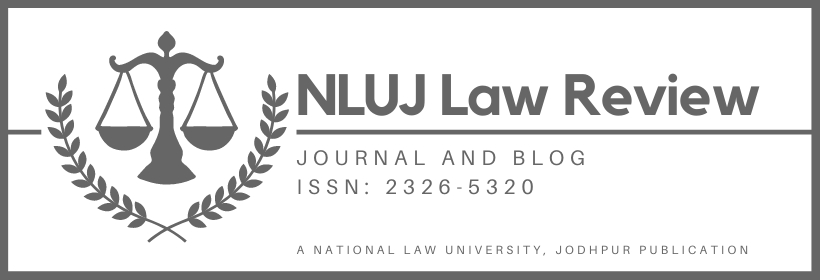The weather on our planet plays a vital and sometimes fatal force in human affairs. Historically, forces such as droughts and floods have proven adept at changing the course of many civilizations. Efforts to overcome challenges posed by such natural phenomenon have been made since aeons but it was only in the last century that humankind has discovered the emerging technology to modify weather.
The term ‘weather modification’ can be defined as an activity performed with the intention of altering the weather; it produces artificial changes in the composition, behaviour or dynamics of the atmosphere. The most commonly seen illustration of weather alteration is inducing rain via cloud seeding. Cloud seeding is a way of changing the amount or type of precipitation by scattering cloud condensing substances which alter the microphysical processes within the cloud.
The technology that makes artificial weather modification possible dates back to 1946 when Dr. Vincent Schaefer discovered the invaluable principle of cloud seeding based on the science of supercooling. The first documented attempt to change natural clouds through ‘cloud seeding’ was seen during a New York flight on 13 November 1946, when precipitation was set in motion from supercooled clouds by cultivating them with solid carbon dioxide (or dry ice), which in present times is supplanted with silver iodide.
Since then, cloud seeding has taken the world by storm. The science of triggering rainfall has seen constant advancements over the years by members of the meteorological community, and a global weather-race has been initialized. We have reached a stage where more than 50 countries are experimenting with cloud seeding technology to increase their groundwater supply or to fight catastrophes like droughts, etc. Be that as it may, there are a number of issues that need to be countered before artificial weather modification can become a common practice.
Changing contours of ‘Act of God’
An Act of God is an act which does not have a human origin and is not under the control of human agency. It is usually referred to as an extraordinary natural phenomenon which cannot be foreseen. It is a general defence in Tort Law and saves the defendant from being made liable for damages arising out of an event which they had no control over. The defence is based on a simple principle – “No man is responsible for that which no man can control.”
Since time immemorial, rains, thunderstorms, and hailstorms, etc., have been covered under the wide umbrella of the term ‘Act of God’ because these natural occurrences warrant no human intervention. However, this is no longer true. The world is now awakening to the near miraculous scope and realities of artificial weather modification. Any liability arising out of weather modification must be borne by the legal entity responsible for causing the negative externality, but the practical application of the polluter pays principle may not be so straightforward.
To affix culpability under the polluter pays principle, one needs to be able to establish a link between the damage, the activity responsible for said damage, and finally, the person responsible for carrying out such an activity. This is a rather arduous task when it comes to tackling weather modification activities. In cases of cloud seeding, it is possible that seeding in one place might lead to precipitation in another place. Further, the time it takes for a seeded cloud to pour down also varies depending upon numerous factors such as temperature and air pressure. If the wind changes direction, then it becomes even harder to track down the trajectory of potentially rain loaded clouds. These shortcomings cast a dark cloud of uncertainty when it comes to fixing culpability. Further, if cloud seeding becomes a norm, there will be no way to investigate and hence determine, whether a distinct rain was caused by an artificially seeded cloud or a natural cloud or a combination of both. It is these predicaments which will slowly but surely change the contours of what we today term as Act as God.
Trans border repercussions of cloud seeding
The sky above is not demarcated by political lines present on the maps. The World Meteorological Organisation, in a report published in 1963, has stated that atmospheric processes such as the hydrologic cycle and air currents guarantee that any artificially induced change in weather in one part of the world will necessarily have repercussions elsewhere. This makes weather modification an international issue.
Recently, China’s ‘Sky River’ project has come under critical observation for the same reasons. In an attempt to spurt precipitation on areas of the Tibetan plateau, the Chinese authorities utilized cloud-seeding. This resulted in the overflow of the Yarlung Tsangpo River which also flows through India, where it is known as the Brahmaputra. With the Brahmaputra already flood prone due to other reasons, the Sky River project seems to be rubbing salt on India’s wounds. China is not only changing its own ecology but is also interfering with the ecological balance of India. Not only does this exemplify the extraterritorial operation of cloud seeding but also cautions for how there is a possibility for this technology to be used as an ecological weapon.
In fact, weather modification techniques can prove to be a valuable addition to the military arsenal of any nation as it would allow the nation to rattle its enemy State by subjecting it to continued rains. In order to deter the use of weather modification as a weapon, an international agreement has been put into place. The 1976 Convention on the Prohibition of Military or Any Hostile Use of Environmental Modification Techniques (also known as the Convention on Environmental Modification) (“ENMOD”) currently has 78 state parties. However, for a State to be liable under the provisions of ENMOD, the State action must be military or hostile. Effectively, this stipulation completely excludes the concerns raised by projects like Sky River and leaves a void when it comes to redressing non-hostile environmental degradation.
It is rather obvious that in trying to change the ecology of the home country, another country’s ecology will also be affected. There may also be a situation where in order to induce rainfall in the home country, the sovereign country has to seed the clouds in another sovereign republic. For example, if India decides to artificially induce rain in the state of Rajasthan when the wind direction is from west to east, then it has no choice but to cloud seed in Pakistan. In absence of an international treaty or bilateral agreement on the subject matter, the diplomatic relations of the two states will hinder the prospect of an expedited amicable agreement with regard to these issues.
The need for legal control
The ability to artificially control weather puts it under the reign of humankind, and heavy is the head that wears the crown. We are well aware of the anthropological and evolutionary need for regulations and if regulating weather is a legitimate aim of the State, then regulating artificial weather modification shall be warranted too for certainty, order and other aims.
The precautionary principle requires that, if there is a strong suspicion that an activity may have environmentally harmful consequences, it is prudent to control that activity now rather than to wait for irrefutable scientific evidence; since meteorologists currently lack the expertise to assess the risks of large-scale cloud seeding interventions, it must be put under the strict scrutiny of law especially in its inception years. A comprehensive set of rules and directives governing the conduct of both experimental and practically implemented cloud seeding activities are thus a matter of utmost priority.
Moreover, we have already concluded that there is no remedy against non-hostile environmental degradation under international law. To continue weather modification experiments in the absence of a legal framework is tantamount to turning planet Earth into a laboratory in vivo, whereby humankind would be gambling everything that keeps it alive in hopes of a seemingly impossible dream. Such an act would threaten the long term stability of the environment, which is in violation of the sustainable development principle of environmental jurisprudence.
‘Rain making’ in all its glory is a magnificent capability which will result in a ceaseless legal examination prolonged over the next few decades. Activities such as unnaturally inducing rain will definitely give rise to its fair share of concerns and while the scientific aspects will always be interesting to discuss, a rational person can’t help but consider the economic, social, and legal consequences. In fact, the mission of exploiting the weather to the whims of humankind is appropriately complicated by the diverse concerns of many industries and various sections of society which may be affected by it.
Whose concerns trump whose is the age-old question in law, which can be either solved by the balancing of interests test by the judiciary or the application of a policy as mandated by the legislature. The balancing of interest principle directs the judge in charge of the matter to weigh the competing interests of the litigants and pronounce in favour of the party with a relatively more compelling interest. This test is most often used to settle a newly arisen issue where there is a legislative void. In the longer run, however, a legislation would produce more uniform results whilst allowing for flexibility in terms of supportive judicial precedents. Thus, the clashing interests of two parties can be best adjudicated with the help of a dedicated policy framework.
The only legal instrument which has come close to even recognise such an issue exclusively is the Draft Articles on Prevention of Trans-boundary Harm from Hazardous Activities of 2001 by the International Law Commission. The aforementioned instrument lays down an obligation that the State shall take all appropriate measures to prevent significant trans-boundary harm or at any event to minimize the risk thereof. However, it is a non-binding piece of instrument and leaves a lot to be desired in terms of a specific emphasis on weather modification and cloud seeding in particular. Therefore, a multilateral treaty seems to be a fitting first step in the right direction, which shall be followed by domestic legislations on similar lines.
Conclusion
Throughout the course of history, law has had the liberty to trail technological advancements as the speed for progress and innovation was slow, but the world moves much faster now. Earlier, the legal system could let even the most challenging and relevant issues simmer before reaching a denouement. However, those are the luxuries of the past. The rapid changes of the modern world do not allow an evolutionary formulation of legal rules. Once large-scale artificial weather modifications are possible, even one unregulated activity can become cataclysmic for a vast number of people. Instead of being passive and reactive to this scientific development, the system needs to be proactive. Therefore, an exhaustive legal framework is required to mitigate the startling legal ramifications of cloud seeding on both domestic and international fronts.
The article has been authored by Samarth Luthra, a student at University School of Law and Legal Studies, Guru Gobind Singh Indraprastha University.

